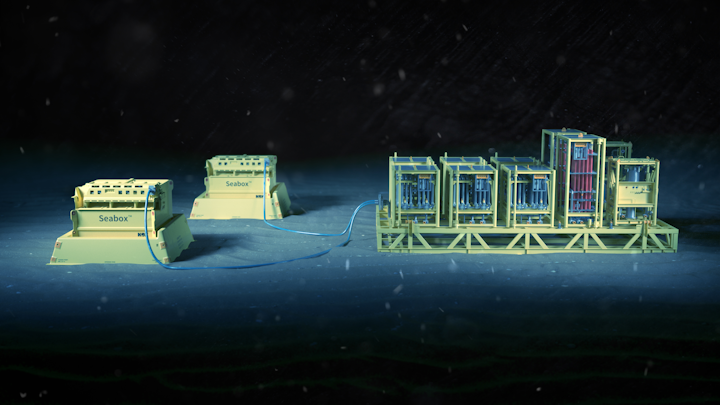New subsea processing tools designed to enhance recovery, lower capex
Published on by Water Network Research, Official research team of The Water Network in Business
Operators are now able to achieve project goals with the use of new and emerging subsea processing technologies.

The SWIT technology is expected to enable operators to remove all water injection equipment from the host facility. (Courtesy NOV)
David McLaurin and Kendall Hawthorn , Intecsea, Worley Group
The offshore industry is entering a new era of opportunity for increased oil and gas recovery. The need to develop new methods to enable cost effective and reliable development of previously inaccessible reserves is on the forefront of operators’ objectives. There are currently many common goals amongst operators. The primary goals include increasing the economic benefits of brownfields and to move previously uneconomical greenfields to an economically feasible status.
Innovative technological advancements are being made today with these key goals as the driving factor. Along with advances to existing subsea processing technologies, such as subsea boosting, new subsea processing technologies are emerging across the industry. In alignment with the theme for the 2020 Worldwide Survey of Subsea Processing poster, this article discusses emerging subsea processing technologies which enable lower capex, greater product recovery, reduced operational CO2 emissions, and lower risk.
Status of subsea processing
Since its inception, subsea processing has maintained the primary goal of enabling operators to develop fields that historically, have not been economically viable, as well as allowing for recovery of additional reserves from already economical fields. The equipment on the seabed may also reduce topsides facilities space and weight requirements. Operators are now able to achieve project goals with the use of new and emerging subsea processing technologies. Subsea processing is now considered a viable option for the majority of deepwater projects and continues to grow as an accepted solution for many different applications.
New boosting technologies
A primary industry accepted solution for subsea fields with marginal wells is subsea boosting. While very beneficial, subsea boosting on a project also comes with cost, risk and complexity. Reliability vs. availability of subsea boosting systems is always a topic of concern and has driven many suppliers to constantly update and advance their subsea boosting systems. New boosting technologies have resulted in more reliable boosting with more options to maintain system availability.
The FASTsubsea X pump module is one promising new technology. FASTsubsea is a new company which combines Aker Solutions’ high-performance multiphase MultiBooster technology with FSubsea’s game-changing Hydromag technology to create the world’s first ‘topside-less’ multiphase boosting system. Alexander Fuglesang, managing director of FASTsubsea, says that “overall, at high level, the pump module itself (which removes the need for topsides HPU, VSD and barrier-fluid lines in the umbilical) actually constitutes the bulk of the whole pump system.” The FASTsubsea pump module is expected to drastically reduce subsea pump system cost, decrease risk and increase system reliability. The FASTsubsea X pump module is expected to be TRL 4 in 2022.
 The FASTsubsea X pump-module solution is designed to enable subsea boosting at fields where there is no available topsides space.(Courtesy Aker Solutions)
The FASTsubsea X pump-module solution is designed to enable subsea boosting at fields where there is no available topsides space.(Courtesy Aker Solutions)
Other new boosting technologies include the Aptara Modular Compact Pump from Baker Hughes and the Barrier Fluidless Subsea Pump from Saipem and Curtis Wright.
The Aptara Modular Compact Pump is expected to have a much higher power density than traditional subsea multiphase pumps. It is also a barrier fluid-less pump, significantly reducing requirements on topsides space and reducing umbilical requirements. The pump consists of independently controllable stages, with individual motors integrated onto each rotor rotating around a static central shaft. This avoids some of the rotor dynamic issues associated with conventional pumps, as well as the need for a mechanical seal. The modules can be stacked and built-up into larger systems depending on process needs. A typical pump is expected to stack between four and 24 stages, giving a pump equivalent shaft power ranging from 1 to 6 MW.
The Barrier Fluid-less Subsea Pump is under development by Saipem and Curtis Wright and will use marinized canned motors from Curtis Wright to eliminate complicated barrier fluid system requirements from the pump motor.
Taxonomy
- Produced Water From Oil & Gas Industry
- Well Drilling
- Oil Production Platforms
- Oil & Gas